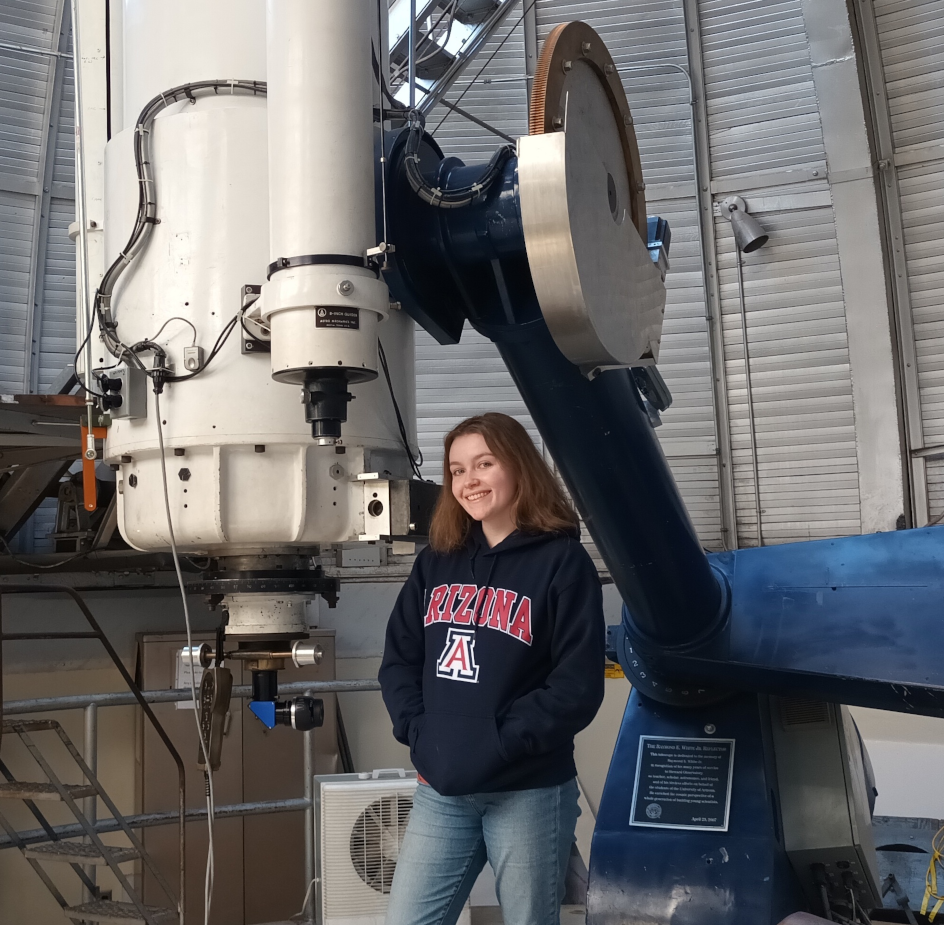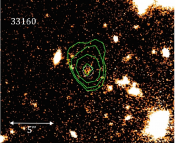Authors: Mélanie Habouzit, Yuan Li, Rachel S. Somerville, et al.
First Author’s Institution: Max Planck Institute for Astronomy
Paper Status: Published in the Monthly Notices of the Royal Astronomical Society, February 2021 [closed access]

This guest post was written by Meredith Stone, a first-year graduate student at the University of Arizona/Steward Observatory. She studies the interplay of star formation and black hole growth at low and high-redshift using the infrared when she’s not busy knitting, doing jigsaw puzzles, and working at the K-12 and college levels to increase diversity in STEM.
Astronomical observations and simulations are symbiotic, like bees and flowers. We use simulations to put observations in context and understand how objects change over time and answer questions like: how do hot Jupiters form? How do stellar winds and magnetic fields affect star formation? What did the local Universe’s giant elliptical galaxies look like 10 billion years ago?
At the same time, our understanding of the Universe – from theory and observations – motivates the ingredients of simulations. The movement of fluids and magnetic fields, the interactions between dark matter and normal matter, and the activity of supermassive black holes form the basis of large-scale cosmological simulations, which seek to simulate not just a single star, planet, molecular cloud, or galaxy, but thousands of galaxies across billions of years.
This closed-loop relationship means it’s critically important to understand the reasons why cosmological simulations might disagree with the Universe we see. For example, if a simulation says we should be seeing a particular type of galaxy, but it doesn’t show up in observations, that likely means there’s some physical mechanism missing from the simulation or an observational selection effect (something about the galaxy that makes it difficult to detect using large galaxy surveys) at play. Distinguishing between the two can take years, dozens of papers and hundreds of gray hairs).
One simple way to judge simulations against observations is to look at the correlation between two measurements in the simulation vs. in observations. Today’s paper focuses specifically on the correlation between the mass of a galaxy’s central supermassive black hole (MBH) and the total mass of all the galaxy’s stars (M*). These two quantities are correlated—with a decent amount of scatter – in the nearby Universe: what does that correlation look like in cosmological simulations?
The authors of today’s paper discuss six cosmological simulations: Illustris, two versions of IllustrisTNG (one smaller, one larger), Horizon-AGN, EAGLE, and SIMBA. Every galaxy in these simulations contains dark matter, a central supermassive black hole, baryonic (normal, non-dark) matter, and winds from both supernovae and the central black hole that can disrupt the baryonic matter or push it out of the galaxy entirely (a process known as feedback). Galaxies can merge as the simulation progresses, and their central black holes will also merge if they get close enough.

Figure 1 shows the black hole mass – stellar mass (MBH – M*) relationship at the end of each of the six simulations (z = 0, the “present day”), plus a set of observed supermassive black holes in galaxies in the local Universe. The black contour in every panel represents the region where most of the observations lie.

The authors point out the main differences between the simulations and observations, where the simulations either overpredict or underpredict the number of black holes (see the regions in Figure 2). In general, the simulations aren’t able to produce the same diversity of black hole galaxy combinations that we see in the real Universe. They also note that the shape of the MBH – M* relationship doesn’t seem to change much from 12 billion years ago (z = 4) to the present day in any of the simulations, and the changes to the relation that do occur over time can generally be explained by the particular implementation of the physics in each simulation. This is harder to compare to observations, though, because to measure the relation at earlier times, we would need to look farther away, and measuring black hole masses is difficult in the more distant Universe.
So what could be causing these mismatches? How can the simulation teams make their simulations look more like the observed Universe? The authors suggest adding more randomness and diversity to the black hole growth process. For example, early in the simulations all galaxies are “seeded” with a black hole, which then grows over time. Maybe these initial black hole seeds should have a random mass, rather than being the same for every galaxy. The efficiency of the black hole feedback – how effectively it can push material out of the galaxy – could also be a randomly distributed value, rather than being identical for all galaxies.
However, the astronomers creating cosmological simulations always need to balance the desire to have their simulated Universe be as realistic as possible with the limitations of the supercomputers that run cosmological simulations. As hardware continues to progress and new computational methods are developed, simulations will become more and more sophisticated. Combined with more observations and with the help of simulation-observation comparisons as in today’s paper, they’ll be better able to recreate and teach us about our Universe.
Astrobite edited by Lina Kimmig
Featured image credit: Illustris Collaboration




